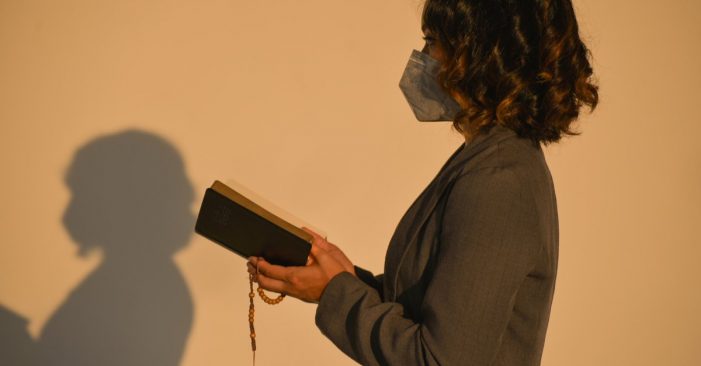By Claudia Finkelstein, The Conversation
The Centers for Disease Control and Prevention has released what it calls “general considerations” on safe actions for reopening houses of worship, but worship communities can accept or reject those considerations.
Religious worship allows tens of millions of Americans to demonstrate devotion to a higher power. It gives people an opportunity to commit – and recommit – to a set of values. In-person services foster a sense of community and belonging. Unfortunately for millions whose lives are enriched by communal worship, traditional services are ideal places for virus transmission: lots of people, close together.
As a physician specializing in internal medicine, I suggest, for now at least, that we reexamine how we worship. After all, what better way to embody the values of your faith than to take steps to protect one another?
Even with the uncertainty and variability of reopening plans, scientifically and medically sound information is available. For starters, you’ll want to assess your individual risk, the prevalence of the virus in your area and the availability of testing.
The four pillars
You may consider guidelines suggested by Dr. Atul Gawande, noted surgeon and author. He proposes four essential pillars for safe reentry into communal spaces: hygiene, distancing, screening and mask use.
All four must operate together to minimize transmission. Will your place of worship be able to enact these pillars?
For example: Will you have easy access to hand-washing or sanitizing? Will communal surfaces and shared spaces be wiped down? Will attendance be limited to allow distancing, and will attendees be screened with temperature checks and self-screening questionnaires? Will your place of worship enforce mask use and distancing? Anything short of all four pillars increases transmission risk.
And even with all the precautions, people with infections can be asymptomatic – so despite the screening measures, you can’t be sure who has the virus and whether you might become exposed.
Today’s services: Short, outside – and cut the choir
Other factors influence viral spread. The dose you receive is higher when you’re close to someone not wearing a face covering. Someone sneezing and coughing increases the number of virus particles near you. Singing or speaking forcefully releases more virus than speaking quietly. Outdoor rates of transmission are much lower than those indoors.
That’s why it’s best if services are short, outdoors and with no singing or physical contact. Only a limited number of attendees, spaced widely and wearing masks properly, would participate.
Early in the pandemic, faith leaders adapted their services: removing holy water, forbidding handshakes, limiting group size and livestreaming. Buddhist monks seeking alms wore face shields. But others protested any restrictions.
In dealing with the virus, we still have much to learn. But values common to all religions exist – compassion, kindness, respect for fellow humans and some variation of the Golden Rule. Until more is known about COVID-19, let’s choose a path following one of the major tenets of my profession: First, do no harm.

